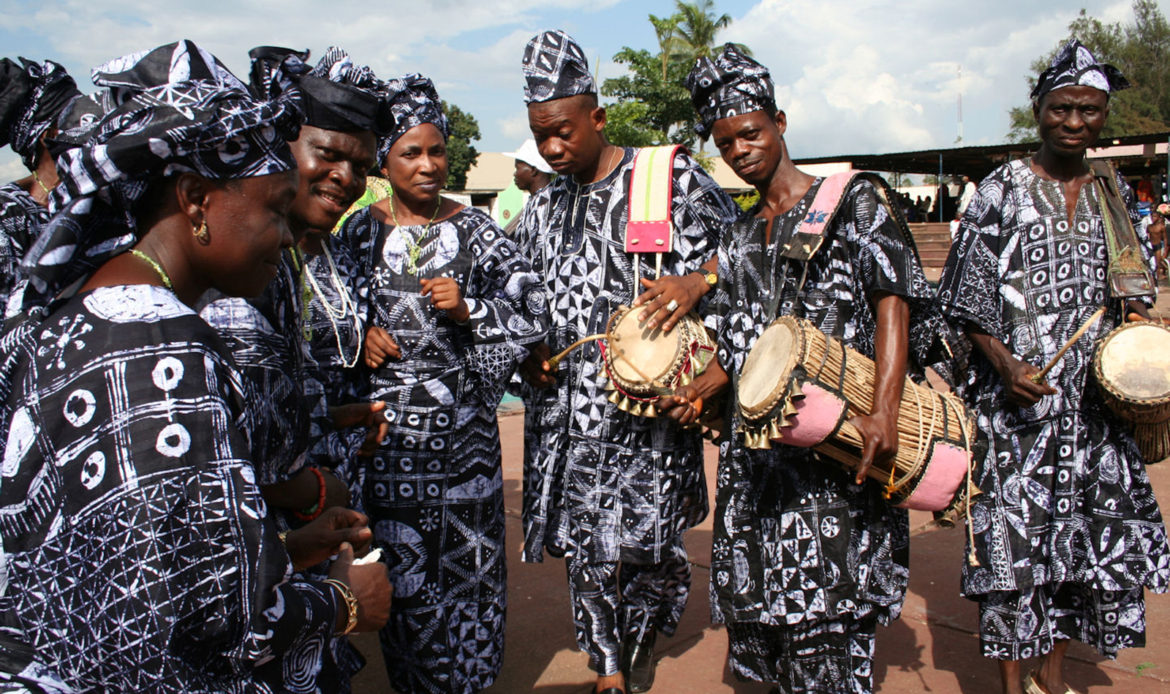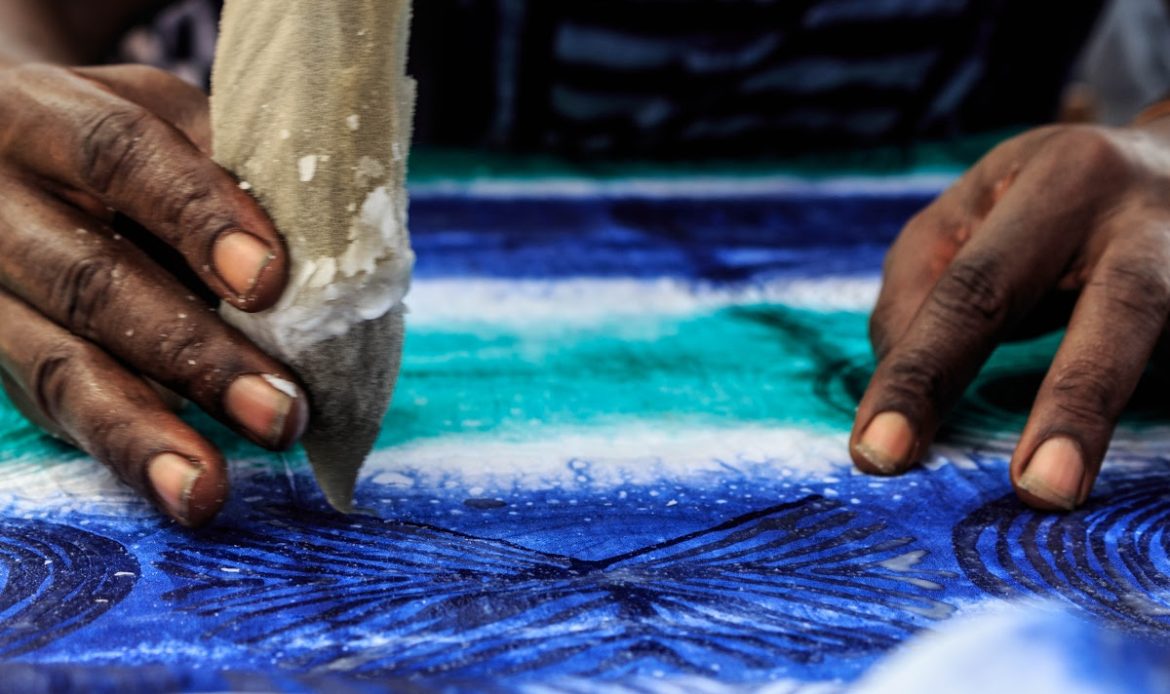Adire: The Art of Tie and Dye
As advocates of the richness of the Nigerian multiethnic culture, today we dwell on Adire from the South Western part of Nigeria. Abeokuta in Ogun state is recognized as the indigenous capital of Adire. Adire is an indigo-dyed cloth made in in Nigeria by Yoruba women and men, using a variety of resist dyeing technique which involves creating a pattern by treating certain parts of the fabric to prevent them absorbing dye. Adire, translated in English means tied and dye which speaks to the process employed in making the clothes.
So, you are right, the process is the name of the cloth in the Yoruba language. Welcome to learning more about Adire.

The indigenous production of indigo-dyed adire involves the input of two specialists, the dyers (Alaro), who control production and marketing of adire, and decorators (Aladire), who creates the design patterns.
In the oldest forms of Adire, two basic resist techniques were used to create soft blue or white designs to contrast with a deeply saturated indigo blue background. Adire Oniko is tied or wrapped with raffia to resist the dye. The raffia palm is stripped, and the spine sewn into the fabric. After dyeing the raffia is usually ripped out, although some choose to leave it in and let wear and tear on the garment slowly reveal the design. Adire Eleko has starchy maize or cassava paste hand-painted onto the surface of the cloth as a resist agent. Traditionally done with different size chicken feathers, calabash carved into different designs are also used, in a manner similar to block printing. Since the early twentieth century, metal stencils cut from the sheets of tin that lined tea chests have also been used.
Further experimentation led to two additional techniques; Adire Alabere which involves stitching the cloth with thread prior to dyeing to produce fine-lined motifs. Adire Batani is produced with the aid of zinc stencils to control the application of the resist starch. The decorator works with a 1 x 2-yard fabric rectangle as a design field, making two identical pieces sewn together to make a square cloth most commonly used for a woman’s wrapper. Most wrappers have repeated all-over patterns designed on them.

In the traditional society, the Adire is created, designed, dyed and sold as well as worn by Yoruba women who pass on the techniques from one generation to another. Using traditional techniques, it takes roughly three days to complete a yard, and about two weeks to complete five yards. Most designs have repeated patterns depicting. More modern designing (comprising of candle wax and foam) takes about 24 hours to finish 2 and a half yards of designing.
Using traditional techniques, it takes roughly three days to complete a yard, and about two weeks to complete five yards. Most designs have repeated patterns depicting items from everyday life. More modern designing (comprising of candle wax and foam) takes about 24 hours to finish 2 and a half yards of designing. Significantly faster and more efficient than the traditional means.
Read Also: Efik Traditional Attires
There has been a recent revival of the Adire art by Nigerian artisans such as Nike Davies-Okundaye who owns several Art centers and workshops. The art of making Adire is one of the creative expressions taught at her workshop. In 2013, Chief Nike’s painting with the famous Adire symbols in the background was accepted by the world’s largest museum, The Smithsonian. Adire continues to make appearances locally and all over the world in the different of dressing for men and women. Adire is used as a cover material for books, bags, pillows, shoes e.t.c
We applaud the hard work and ingenuity that goes into the creation of these clothes. If you find yourself in Ibadan, Oyo and Abeokuta, make sure you grab some of these beautiful pieces. If you are Lagos however, you know you can find any and everything in the Lagos Island Market, Balogun.
Please share your knowledge on what can be done to increase the usage and popularity of Adire.

3 comments
Itís hard to come by knowledgeable people for this subject, but you seem like you know what youíre talking about! Thanks
I got good info from your blog
Thanks, I have recently been looking for information approximately this topic for ages and yours is the best I have discovered so far. But, what about the conclusion? Are you certain in regards to the source?
Comments are closed.